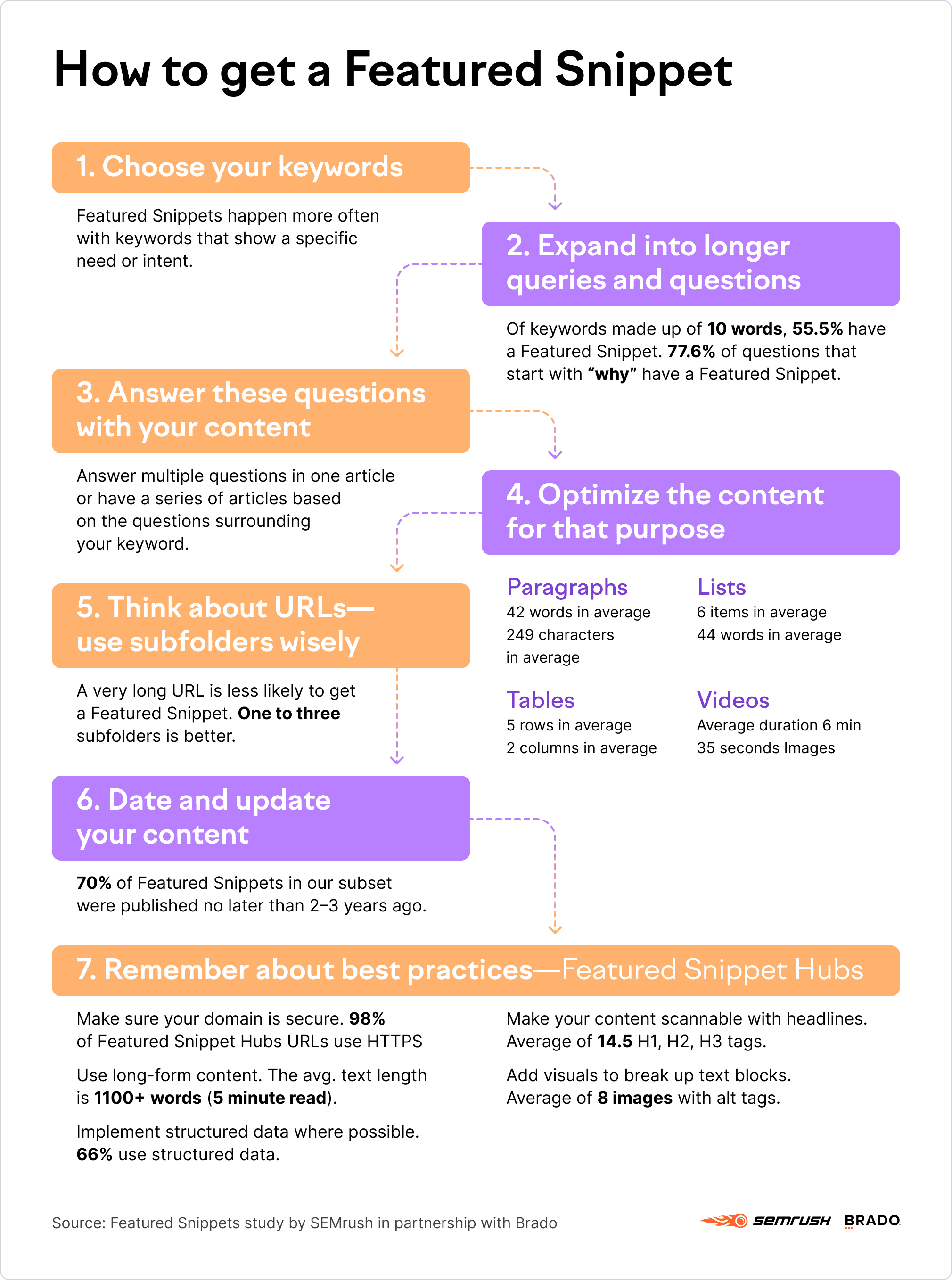
How to Optimize Your Site for Featured Snippets: A Comprehensive Guide
In this digital age where search engine results are king, mastering the art of optimizing your website for featured snippets can make all the difference in driving traffic and increasing visibility. Understanding How to Optimize Your Site for Featured Snippets is crucial for any website owner looking to secure a prime spot on search engine results pages. Featured snippets, also known as position zero, are brief answers displayed at the top of search results that provide users with immediate information. To help you navigate this competitive landscape and harness the power of featured snippets, this comprehensive guide will delve into strategies and best practices to enhance your website’s chances of being featured.
Featured snippets are brief answers displayed at the top of search engine results pages, providing users with direct and concise information. They are highly coveted in SEO because they increase a website’s visibility and credibility, driving more organic traffic. By optimizing your content to appear in featured snippets, you can attract more clicks and stand out among competitors.
To secure a featured snippet, focus on creating high-quality, informative content that directly answers common user queries. Conduct keyword research to identify relevant topics and questions that users frequently ask. Use structured data markup to help search engines understand your content better and increase the chances of it being selected for a featured snippet. Additionally, format your content in a clear and organized manner, with headings, bullet points, and numbered lists to enhance readability. By understanding the importance of featured snippets and implementing these strategies, you can boost your site’s visibility and drive more valuable traffic.
When it comes to optimizing your site for featured snippets, it’s crucial to understand the different types of snippets that can appear in search results. These include paragraphs, lists, tables, and videos. By identifying the type of snippet that commonly appears for your target keywords, you can tailor your content to better meet the criteria for earning that coveted spot.
Paragraph snippets typically answer specific questions or provide a concise summary of a topic. To optimize for paragraph snippets, structure your content in a clear and organized manner, with headings and subheadings that clearly outline the main points. Utilize relevant keywords and provide succinct answers to common questions within your content.
List snippets, on the other hand, present information in a bulleted or numbered list format. To optimize for list snippets, consider breaking down your content into easily digestible points and using schema markup to help search engines understand the structure of your list. Including numbered or bulleted lists within your content can also increase the chances of earning a list snippet feature. By understanding and catering to the different types of featured snippets, you can enhance your site’s visibility in search results and drive more organic traffic to your site.
When conducting keyword research for featured snippets, it is essential to focus on long-tail keywords that are phrased as questions or phrases that indicate a user is seeking a direct answer. These keywords should align with the content on your website and be relevant to your target audience. By using tools like Google’s Keyword Planner or SEMrush, you can identify high-volume keywords that have a high chance of triggering a featured snippet.
Additionally, analyze the search intent behind the keywords you choose. Understanding what users are looking for when they search for a particular query will help you tailor your content to provide a concise and informative answer that is likely to be featured in the snippet. By optimizing your content around these targeted keywords and providing clear and structured answers, you increase the chances of your website being selected for a featured snippet, ultimately driving more organic traffic to your site.
Crafting content that targets featured snippets is essential for improving your site’s visibility on search engine results pages. To optimize your content for featured snippets, start by identifying common queries related to your industry or niche. Use tools like Google’s “People Also Ask” feature or keyword research tools to find popular questions that users are searching for. Once you have identified these questions, create high-quality, concise content that directly answers the query in a clear and structured manner.
When crafting content for featured snippets, it’s important to format your content in a way that is easily readable and scannable by search engines. This includes using bullet points, numbered lists, tables, and headers to break up your content into digestible sections. Additionally, make sure to include the target keyword or question in the heading or subheading of your content to signal to search engines that your content is relevant to the query. By following these strategies and creating content that directly addresses popular search queries, you can increase the likelihood of your site being selected for a featured snippet and attract more organic traffic to your site.
To optimize your site for featured snippets, it’s crucial to structure your content in a way that aligns with what search engines are looking for. Start by organizing your content into clear, concise sections with headers that use relevant keywords. This helps search engines understand the hierarchy of your information and increases the chances of your content being selected for a featured snippet.
Additionally, make sure to provide direct answers to common questions or queries within your content. This means addressing the who, what, when, where, why, and how of a topic in a straightforward manner. By structuring your content in a question-and-answer format and using bulleted or numbered lists where appropriate, you can make it easier for search engines to identify and display your content as a featured snippet.
Remember, the key to optimizing your content for featured snippets is to provide valuable and easily digestible information that directly addresses user queries. By following these optimization strategies and structuring your content effectively, you can increase the visibility of your site in search results and drive more traffic to your site.
Optimizing meta tags and descriptions is crucial for securing a featured snippet on search engine results pages (SERPs). To enhance your chances of being featured, ensure that your meta title and description accurately reflect the content on your web page. Use relevant keywords that are likely to trigger a featured snippet, and keep the character count within the recommended limits to avoid truncation.
Craft compelling meta descriptions that entice users to click on your link while providing a concise summary of the page’s content. Including structured data markup such as Schema.org can also help search engines better understand the context of your content, increasing the likelihood of being selected for a featured snippet. By optimizing your meta tags and descriptions with relevant keywords and clear, concise information, you can improve your site’s visibility and attract more organic traffic through featured snippets.
Leveraging schema markup is a powerful tool for enhancing your website’s visibility in search engine results, especially when it comes to securing featured snippets. Schema markup provides search engines with structured data that helps them better understand the content on your site. By implementing schema markup, you can provide search engines with more detailed information about your content, making it easier for them to display relevant snippets to users.
To optimize your site for featured snippets using schema markup, start by identifying the key information you want to highlight. This could be anything from product prices and ratings to event dates and locations. Once you’ve identified this information, use schema markup to mark it up in a way that search engines can easily recognize and display in their search results. By doing this, you increase the chances of your content being featured as a snippet, which can lead to higher click-through rates and increased visibility for your site.
Monitoring and analyzing featured snippet performance is crucial for optimizing your site’s visibility in search results. By regularly tracking the performance of your featured snippets, you can gain valuable insights into what content resonates with users and how to improve your chances of securing more featured snippet placements.
To effectively monitor and analyze featured snippet performance, start by identifying which keywords trigger featured snippets for your site. Use tools like Google Search Console and third-party SEO analytics platforms to track the performance of these keywords over time. Pay close attention to metrics such as click-through rate, impressions, and position to gauge the effectiveness of your featured snippets.
By analyzing this data, you can make data-driven decisions to optimize your content for featured snippets, such as adjusting your content structure, incorporating relevant schema markup, and targeting long-tail keywords. Continuously monitoring and analyzing your featured snippet performance will help you stay ahead of the competition and drive more organic traffic to your site.
To outrank competitors for featured snippets, it’s crucial to focus on creating high-quality, relevant content that directly answers common user queries. Conduct thorough keyword research to identify popular search queries related to your industry and target those in your content. Use structured data markup to help search engines understand the context of your content better, increasing the chances of being featured in snippets.
Additionally, optimize your content for readability and organization to make it easier for search engines to extract information for featured snippets. Utilize headings, bullet points, and clear, concise language to present information in a format that is easily digestible for both users and search engines. Regularly monitor your competitors’ featured snippet strategies and adapt your approach accordingly to stay ahead in the rankings. By consistently delivering valuable and well-structured content, you can increase your chances of securing featured snippet placements and outperforming your competitors in search results.




